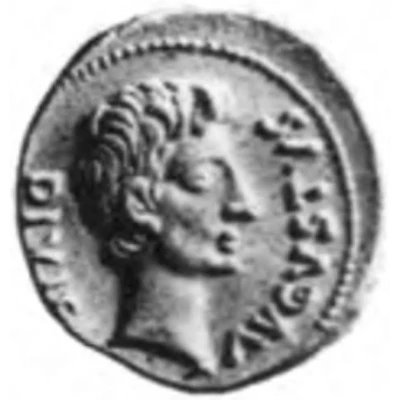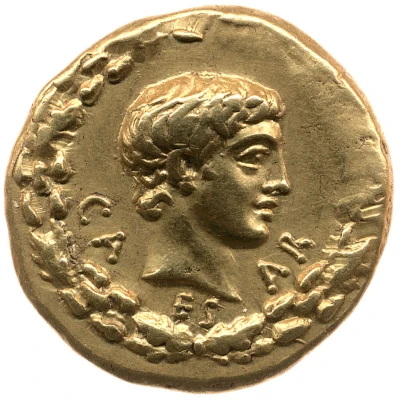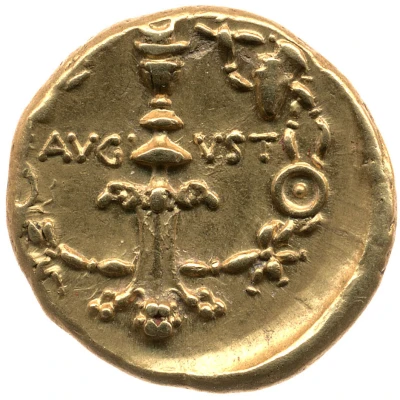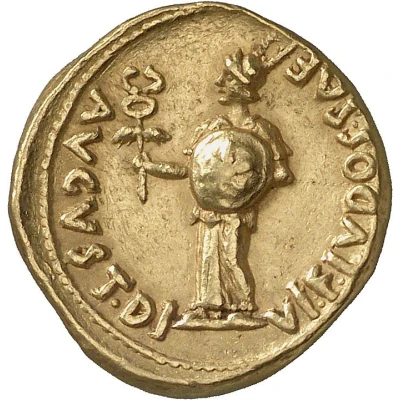
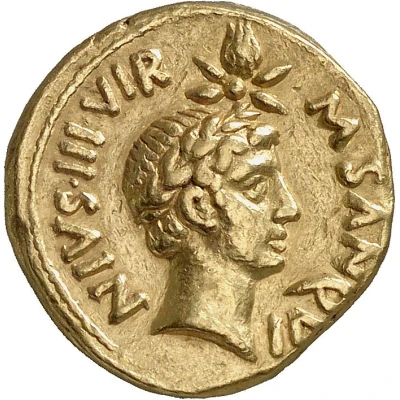

© Münzkabinett - Staatliche Museen zu Berlin (CC BY-SA 4.0)
Aureus - Julius Caesar M SANQVINIVS IIIVIR 17 BC
17 BC year| Gold | 8 g | 19 mm |
| Issuer | Rome › Roman Empire (27 BC - 395 AD) |
|---|---|
| Emperor | Augustus (Caius Octavius) (27 BC - 14 AD) |
| Type | Standard circulation coin |
| Year | 17 BC |
| Value | 1 Aureus = 25 Denarii |
| Currency | Denarius, Reform of Augustus (27 BC – AD 215) |
| Composition | Gold |
| Weight | 8 g |
| Diameter | 19 mm |
| Shape | Round (irregular) |
| Technique | Hammered |
| Demonetized | Yes |
| Updated | 2024-10-05 |
| Numista | N#247820 |
|---|---|
| Rarity index | 100% |
Reverse
Four-rayed comet with tail above youthful head, laureate, right (Deified Julius Caesar).
Script: Latin
Lettering: M SANQVINIVS IIIVIR
Unabridged legend: Marcus Sanquinius Triumvir
Translation: Marcus Sanquinius, moneyer (Triumvir Monetalis)
Comment
Mass varies: 7.89–8.13 g;
Source: Online Coins of the Roman Empire (OCRE)
Biaggi 82; Bahrfeldt 189.
Only six specimens known of which apparently only two are in private hands.
Interesting fact
One interesting fact about the Aureus coin featuring Julius Caesar is that it was minted during his lifetime, making it one of the few coins that were issued while the Roman leader was still alive. This is significant because it suggests that Caesar had a high level of control over the Roman mint and was able to use it as a tool for promoting his image and legacy. Additionally, the coin's design, which features Caesar's portrait on one side and a depiction of the goddess Venus on the other, reflects the Roman leader's desire to associate himself with the gods and to promote his own divine status.
